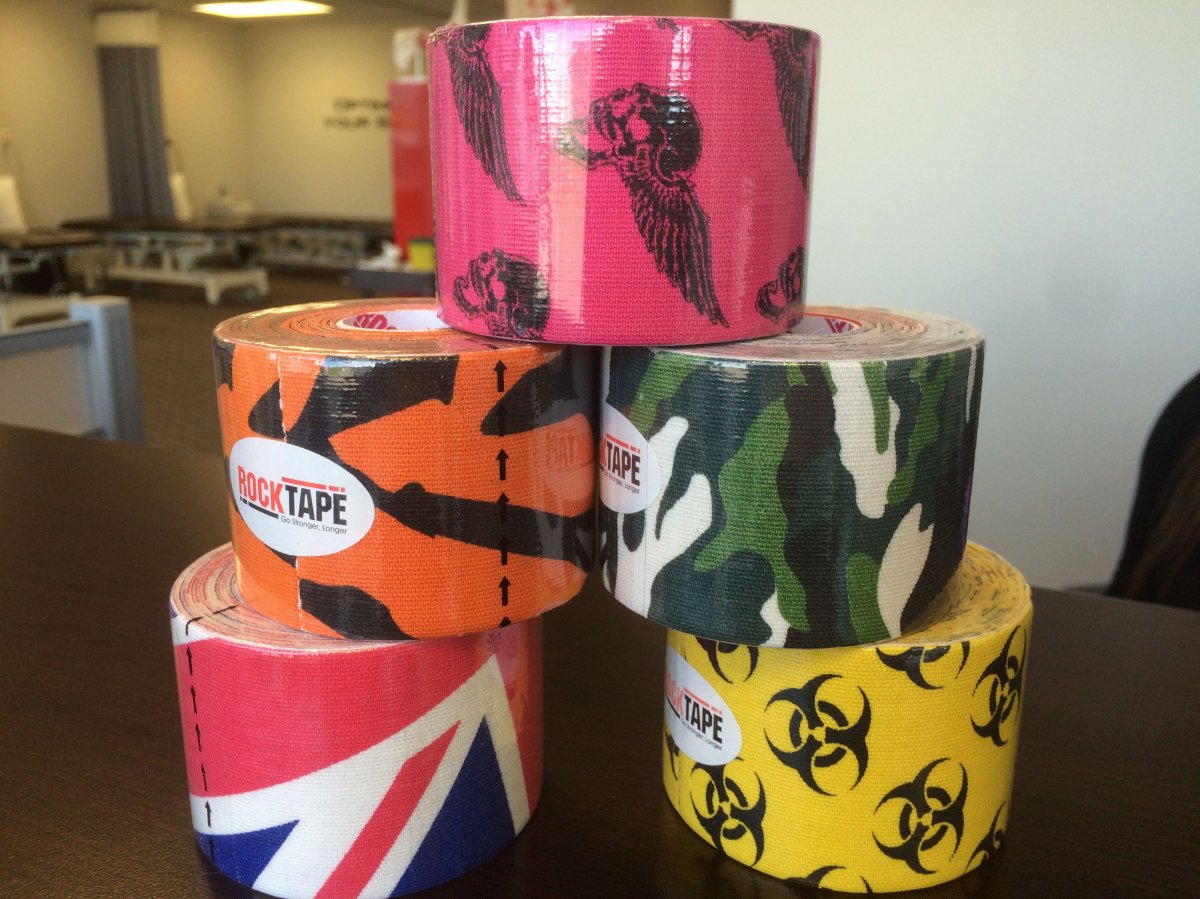If you’ve been catching any of the Olympics in Rio, you’ve probably noticed colourful tape on athletes’ shoulders, legs and other parts of their bodies. But does it actually do anything?

Marketers of kinesiology tape brands like KT Tape or Rock Tape claim it provides support and stability to joints and muscles without affecting circulation and range of motion. It is also said to promote healing, reduce pain and inflammation and relax overused muscles.
“It’s a stretchy tape,” said Aaron Norris, who is a physiotherapist at Optimize Physiotherapy and Sports Injury Clinic in Edmonton. “It has a bit of elasticity to it which can be used over a different joint just to give someone joint awareness or proprioception, as we call it in the physio world. It also can be used to improve posture.”
The tape can be worn two to four days at a time, after one application. Proponents say the way the tape is applied lifts the skin and allows better circulation under the application area.
Norris said the kinesiology tape helps athletes stay mindful of their form, thus preventing further injury.
“It creates essentially some separation between the layers of tissue in the body.
“You have muscle, fascia, skin – it basically creates a separation there, allows for increased blood flow and definitely helps with pain control. Essentially, you feel the tape a little bit more than you feel the pain.”
It was first seen on members of the Japanese Olympic volleyball team but has since spread to multiple sports and disciplines.
However, many experts question the tape’s efficacy.
“The marketers say it’s supposed to help lymphatic drainage, it’s suppose to help separate fascia from muscle, it’s supposed to help muscle and ligament function,” Dr. Marni Wesner said.
“There’s not a lot of good evidence saying it actually does that.”
Wesner is a sport and exercise medicine physician at the University of Alberta and lead physician for Basketball Canada’s women’s team.
She’s seen the popularity of KT Tape grow, but believes its real benefits are minor – or in the athletes’ head.
“I think there’s probably a strong placebo effect,” Wesner said.
“When you see all the Olympic athletes wearing it – if these are the best in the world and this is what they need, or what they think they need, to compete – if you’re Joe Blow athlete, it must help you too.”
Wesner admits it’s likely good for swimmers (it doesn’t react to chlorine like some other athletic tapes do) and it’s latex free. She also said it could help with muscle awareness which could lead to other benefits.
“If you can facilitate muscle recruitment – or a sense of proprioception, which is how the brain knows where the joints are in space – you can help muscle recruitment which might help with power, might help with strength, might help with helping muscles relax so therefore might help with pain control, might help with some muscle recovery.”
Still, the same results could be seen from using a generic athletic tape, which costs about $7 a roll compared to KT Tape’s $20.
Norris said some of his clients don’t notice any improvement using kinesiology tape, but most rave about it.
“Eighty to 90 per cent of the people that use it come back to me and say: ‘What is in that tape? Is there medication?’
“It’s just tape. The way it’s used and it’s applied is what allows people to have less pain,” he said.
Hearing from his clients is enough evidence for Norris.
“Clinically I see it every day where it does work and it is effective,” he said. “I realize the research is out there to say it doesn’t quite work. I think it’s gaining popularity and there’s more research to be done.”










Comments